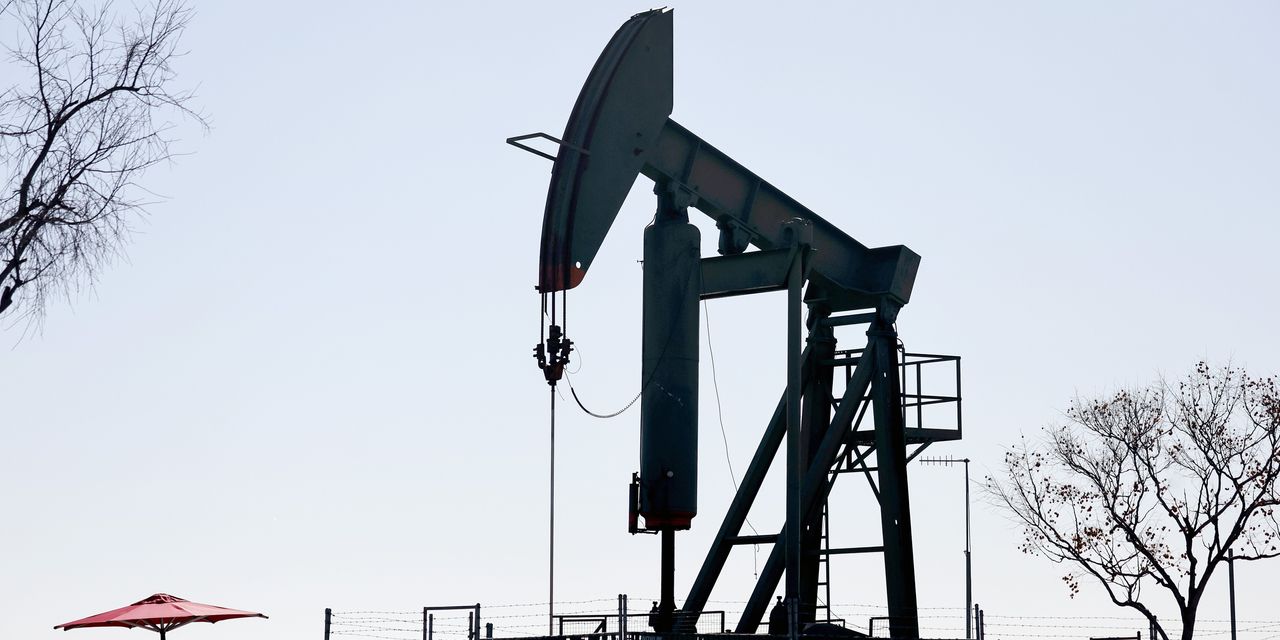Oil prices ticked lower Monday as investors returned from a three-day Easter weekend. Crude surged in holiday-shortened trading last week after the Organization of the Petroleum Exporting Countries and its allies announced an unexpected round of production cuts.
Price action
-
West Texas Intermediate crude for May delivery
CL.1,
+0.02% CL00,
+0.02% CLK23,
+0.02%
fell 8 cents, or 0.1%, to $80.62 a barrel on the New York Mercantile Exchange. -
June Brent crude
BRN00,
-0.18% BRNM23,
-0.18% ,
the global benchmark, fell 11 cents, or 0.1%, to $85.01 a barrel on ICE Futures Europe. -
Back on Nymex, May gasoline
RBK23,
-0.38%
was down 0.8% at $2.803 a gallon, while May heating oil
HOK23,
+1.02%
rose 1.1% to $2.6884 a gallon. -
May natural gas
NGK23,
+7.31%
climbed by 7.6% to $2.164 per million British thermal units after losing more than 9% last week.
Market drivers
WTI and Brent each jumped by more than 6% last week, the third straight weekly rise for both grades. Last week’s rally followed the April 2 announcement by Saudi Arabia and OPEC allies, together known as OPEC+, of plans to cut output by a collective 1.15 million barrels a day beginning in May through the end of 2023, with Russia also pledging to extend a cut of 500,000 barrels a day through year-end.
Traders are getting used to oil in the $80-handle supported by coming OPEC production cuts, as well as rising geopolitical risk, said Phil Flynn, senior market analyst at The Price Futures Group.
China’s tensions with Taiwan and the continuing Russian invasion of Ukraine continues to have influence on OPEC+ decisions, he said in a daily note.
Meanwhile, the $60 a barrel price cap “farce” on Russian oil looks like it is “backfiring as China and India suck down Russian oil, and Japan is already asking for a waiver as they need to get Russian supply.” What that means is that “oil should start building a floor at $80, working toward the high end of the $80 handle in the coming weeks,” said Flynn.
Upside for oil, however, may be limited by uncertainty over the economic outlook and the Federal Reserve’s next move, according to one analyst. Fears of a credit crunch in the wake of last month’s banking woes and continued tightening by the Fed and other central bankers have stirred worries of a steep global slowdown that would undercut crude demand.
“Since we are entering the peak uncertainty phase around the Fed’s next move, with investors debating if credit tightening from financial stress will be enough to warrant cuts or if we are heading for more hikes, so Fed uncertainty could be taking some steam out of very lethargic oil markets today, OPEC’s heavy hand has really tamped down volatility as bulls sit waiting for season demand to pick up and flip the market into a deficit,” Stephen Innes, managing director of SPI Asset Management, said in a note.
Read the full article here










